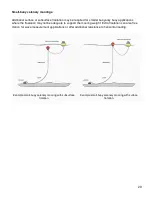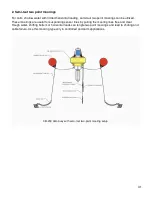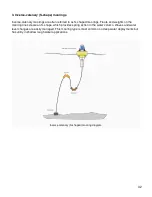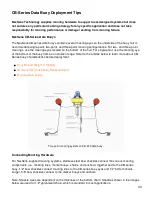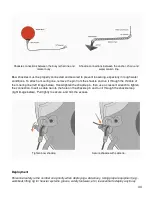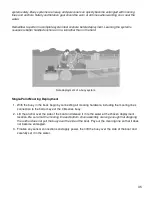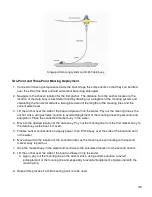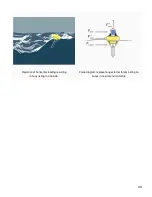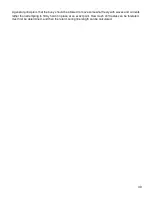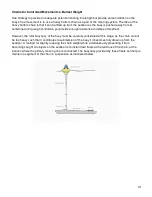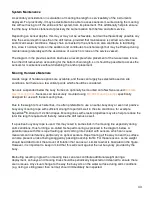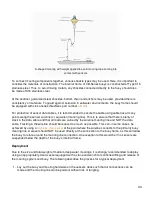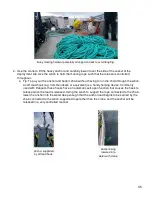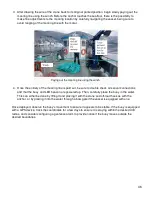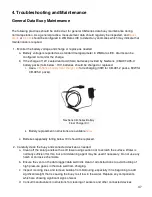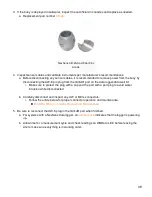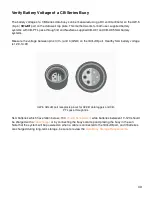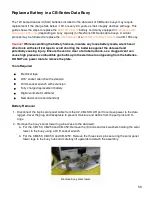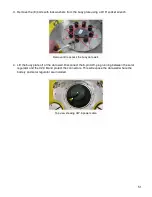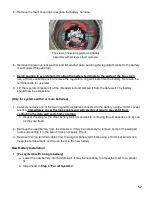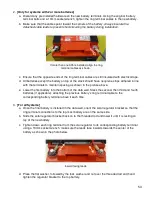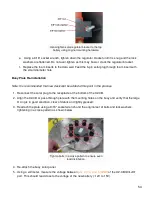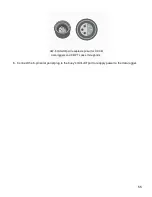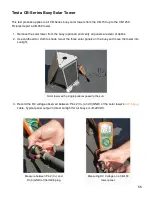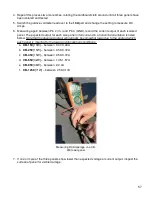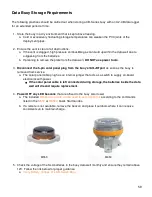
System Maintenance
A secondary consideration in calculation of mooring line length is serviceability of the instruments
deployed. For practicality, it may be desirable to be able to access sensors mounted along the mooring
line without having to lift the entire anchor system from its placement. This additionally helps to ensure
that the buoy remains stationed at precisely the same location both before and after service.
Depending on sensor depths, this may or may not be achievable, but it will be theoretically possible any
time the sensor depth is less than the drift radius, provided that maintenance is carried out under low
and/or calm water conditions. Heavy chain connected to the anchor can also contribute to facilitating
this, since it normally rests on the seafloor and contributes to anchor weight but may be lifted up during
maintenance (preferably with the assistance of a winch or crane on the service vessel).
The diagram in the previous section illustrates an example where placement of the two sensors is less
than the drift radius when accounting for the bottom chain length, so it should be possible to access the
sensors for maintenance without disturbing the anchor placement.
Mooring Hardware Materials
A wide range of hardware options are available, and these can largely be selected based on site
conditions, but there are a few critical points which should be considered.
Sensors suspended below the buoy frame can optionally be mounted onto NexSens-issued
. Sensors can be securely mounted using
designed for use with these mooring lines.
Due to the weight of such wirelines, it is often preferable to use a neutral-buoyancy or even net positive
buoyancy mooring rope with sufficient strength to perform well in the site conditions, for example
Superdan
®
8-strand or 12-strand ropes. Mooring lines with elastic properties may also help to reduce the
total line length required and thereby reduce the drift radius as well.
If a positive buoyancy rope is used, this may result in some slack in the mooring line especially during
calm conditions, thus forming a so-called S-shaped mooring as pictured in the diagram below. A
potential issue with this is rope floating up and coming into contact with sensors, which can cause
measurement interference, particularly on optical sensors. Rope floating all the way to near the surface
can also present a risk of being snagged by passing boat/ship traffic. For those reasons, some weight
should be added to limit the amount of flotation that can occur, similar to what is illustrated in the figure.
However, it is important to keep in mind that this will count against the net buoyancy provided by the
buoy.
Biofouling resulting in growth on mooring lines can also contribute additional weight during a
deployment, so buoys and mooring lines should be periodically inspected and cleaned to ensure there
are no issues. Any visual change to the way the buoy sits on the water surface during calm conditions
(e.g. listing or sitting lower than normal) should immediately be inspected.
43
Summary of Contents for CB-450
Page 42: ...42 ...

